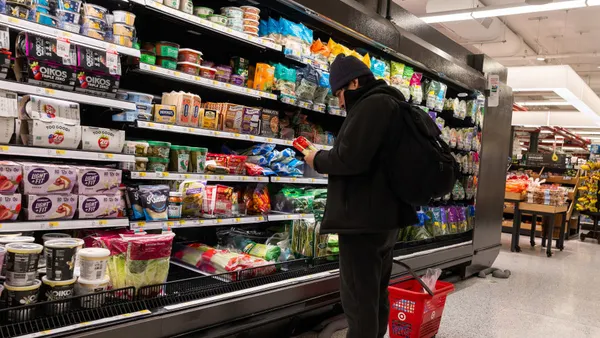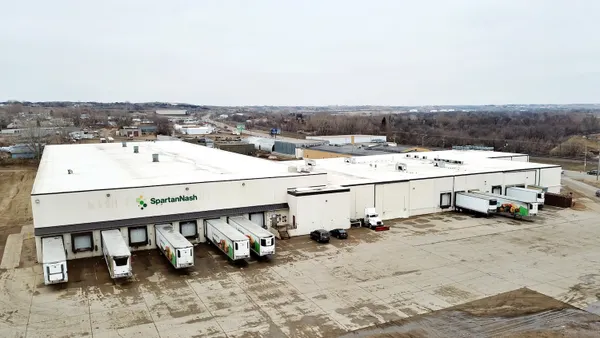Dive Brief:
- Instacart will soon offer restaurant deliveries through Uber Eats and its couriers, with an in-app “restaurant” tab set to deploy across the U.S. “in the coming weeks,” the companies announced Tuesday.
- As a result, “Instacart customers nationwide will be able to use the Instacart app to order from hundreds of thousands of restaurants, powered by Uber Eats,” the companies said. The press release does not state, nor have the companies clarified, whether Uber Eats partner restaurants must explicitly consent to being listed on Instacart’s app.
- The tie-up builds on Instacart’s efforts to diversify its offerings beyond grocery and become more of a one-stop food shop for its users.
Dive Insight:
Given that Instacart suffered a $2.1 billion loss from operations in 2023, it’s unclear how this development will be profitable for either company.
With the partnership, Instacart users will be able to choose from a selection of nearby restaurants, browse menus, place orders and track deliveries in real-time, which will be fulfilled by Uber Eats. Instacart+ members will receive free delivery on restaurant orders over $35, according to the press release.
Instacart positioned the tie-up as a way to further meet its users’ meal needs and noted that the partnership builds on both companies’ efforts to offer digital solutions that support brick-and-mortar businesses.
“Through this partnership, Instacart customers now have access to both the best online grocery selection in the U.S. and restaurant delivery, making it even easier for them to conveniently tackle all their food needs from a single app,” Instacart CEO and Chair Fidji Simo said in a statement.
In recent years, Instacart has expanded beyond its original focus on grocery to include other retail channels, such as sports, fashion, pet products, home improvement, pharmacy, beauty and convenience. It also now offers in-store technology for retailers, including smart carts, electronic shelf labels and digital kiosks.
Uber framed the partnership as a way to drive orders to its partner restaurants. When asked by sister site Restaurant Dive to clarify if Instacart orders had a different fee structure for merchants compared to regular Uber Eats orders, Uber said it would not go into the specific financial details of the deal.
By tapping into Instacart’s ecosystem, Uber could gain access “to millions of customers... including families in suburban markets,” according to the press release.
That reach may be vital to Uber Eats, which remains a distant second to DoorDash in terms of U.S. restaurant delivery market share among consumers, with 67% of consumers ordering through DoorDash and 23% through Uber Eats in March, according to Bloomberg Second Measure.
In a statement emailed to Restaurant Dive, Uber said there would be no difference in menu pricing compared to the prices on Uber Eats’ own platform, and that couriers “will be paid the same way they would be for orders directly from Uber Eats.”
















